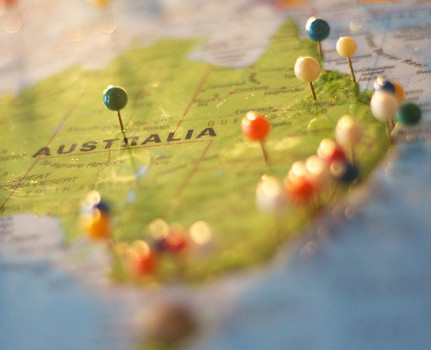AUSTRALIAN WHISKY


Whisky first arrived in Australia in 1788 when convicts, military personnel and crew of The First Fleet disembarked Down Under after their long journey from Portsmouth Harbour in England.
Convicts and early settlers soon realised that producing whisky inside the country was more profitable and manageable than depending on subsequent shipments of whisky from abroad.
The first distilleries were established in Sydney in 1793 and then in Tasmania in 1804, which became a distilling hub.
By 1824 there were 16 licensed distilleries in Australia, plus many unlicensed production sites by local farmers.
In 1839 distilling became prohibited in Tasmania, while in the rest of Australia small and medium productions were pushed out in 1901 by The Distilleries Act, which supported the large-scale distilling industry.
It was in 1928 that the first Australian large-scale distillery opened up: The Distillers Company of Edinburgh established a 10-hectare distillery site in Corio, a suburb in Geelong, Victoria.
The distillery was initially producing gin and it was only in 1934 that its first malt whisky was released. It was the first five-year-old Australian whisky and was called Corio. Sales soared very quickly and Corio became Australia's largest distillery.
In the 1950s Australian whisky faced a challenge when imported whisky became very popular: import duties were shrunk and foreign whisky could be sold at a lower retail price.
Corio counter-attacked by launching a 5-Star whisky but could not contrast the growth of imported whiskies, which finally took over and led Corio to closure in 1989.
During 1990 australian law was changed, allowing whisky to be distilled once again in Tasmania and also the mainland.
Whisky production started growing in the whole country:
- In Queensland, Mount Uncle Distillery was the first to produce australian whisky using barley cultivated in its home state since 2001;
- In Western Australia, The Grove Experience Distillery, which was established in 1995 as a winery, began producing whisky;
- In Victoria, precisely in Melbourne, Bakery Hill Distillery started producing single-cask bottlings of malt whisky, both peated and unpeated, in 1999.

Australian distilleries’ production is mainly focuses on malt whisky, but rye whisky is produced as well.
The minimum ageing years is two and there’s restrictions on cask’s type and size too.
Standard size for Australian whisky is 200 litres, but Overeem in Tasmania only uses 100-litre casks.
Casks are usually ex Bourbon, sherry or port. Since Australian wine is very successful there’s plenty of barriques available to age whisky, like for example ex Shiraz.
Source: The Whisky Dictionary: an A-Z of Whisky, from history & heritage to-distilling & drinking



